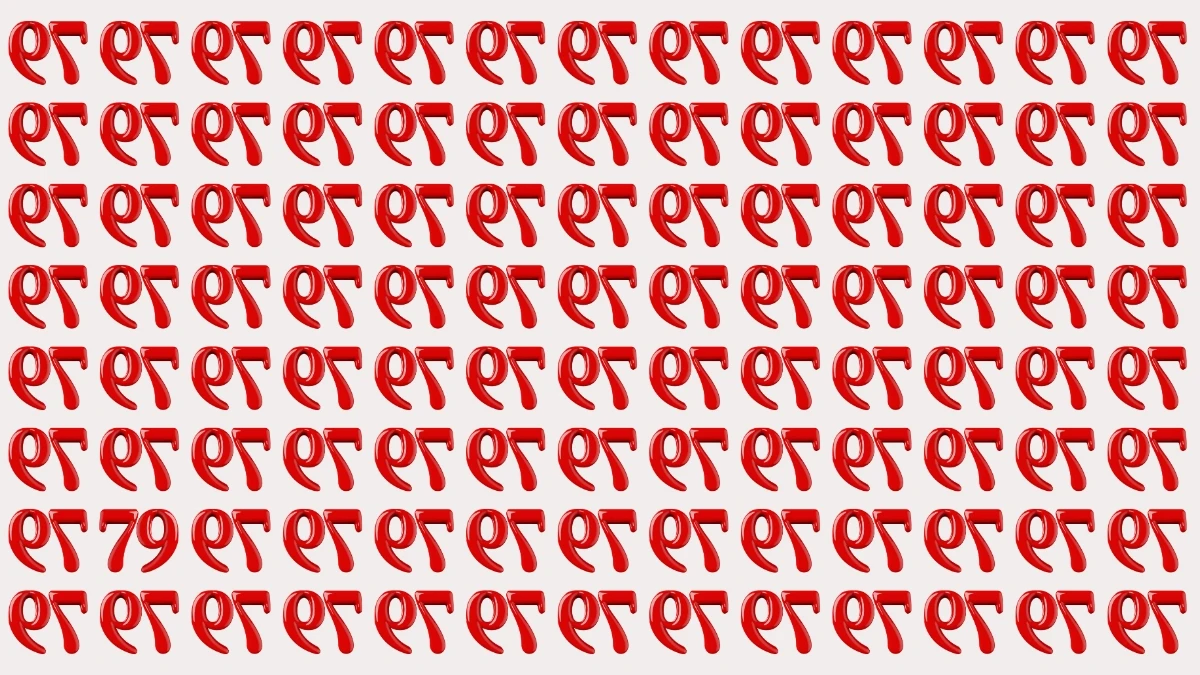Optical Illusion
An optical illusion is a visual phenomenon that tricks the brain into seeing something that isn't actually present or perceiving something differently from how it really is.
These illusions occur because of the way our brains interpret visual information received from our eyes.
Sometimes, the brain makes assumptions based on patterns, lighting, depth, or motion, which can lead to false or misleading perceptions.
For example, a static image might appear to move, or two lines of the same length may seem unequal due to surrounding shapes or angles.
Optical illusions highlight the complex relationship between perception and reality and demonstrate that what we see is not always an accurate reflection of the world around us.
Optical Illusion: Within 5 Seconds Spot The Number 79 among Inverted 79
This optical illusion challenges your visual perception and speed by asking you to spot the number 79 hidden among many inverted 79s within just 5 seconds.
The trick lies in the brain's tendency to process familiar patterns quickly, often overlooking subtle differences.
In this puzzle, the majority of numbers are deliberately flipped versions of 79, creating visual confusion.
Your eyes naturally scan for what they expect, so distinguishing the correctly oriented 79 from the surrounding decoys requires sharp focus and quick pattern recognition.
Such illusions are a fun way to test your observational skills and demonstrate how easily our brains can be tricked by slight variations in visual stimuli.

Optical Illusion: Within 5 Seconds Spot The Number 79 among Inverted 79 - Solution
In this optical illusion, the challenge is to spot the correctly oriented number 79 hidden among numerous inverted 79s a task meant to test your visual attention and speed.
Most of the numbers are mirrored to confuse the viewer, but there is one standard 79 hidden in the grid.
Upon close inspection, the correct 79 is located in the bottom-left quadrant, specifically in the second ow from the bottom and second column from the left.
It stands out because it is the only number facing the correct way, while all others are mirrored versions designed to deceive your perception.
The illusion works by overwhelming the visual field with near-identical symbols, making the correct one harder to spot quickly.






